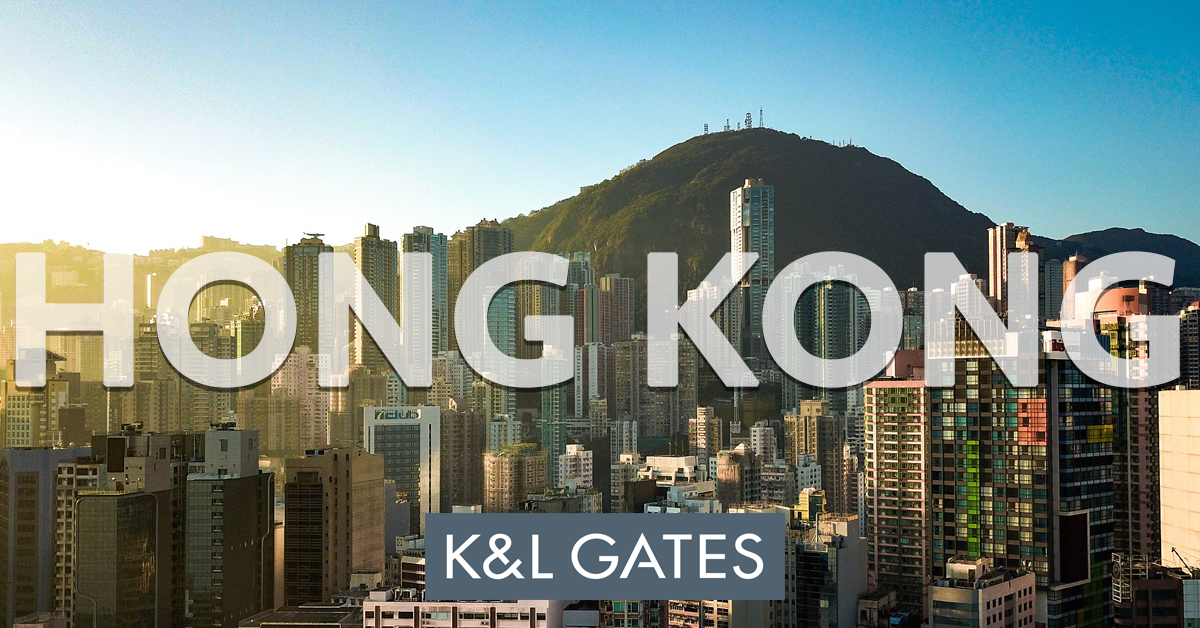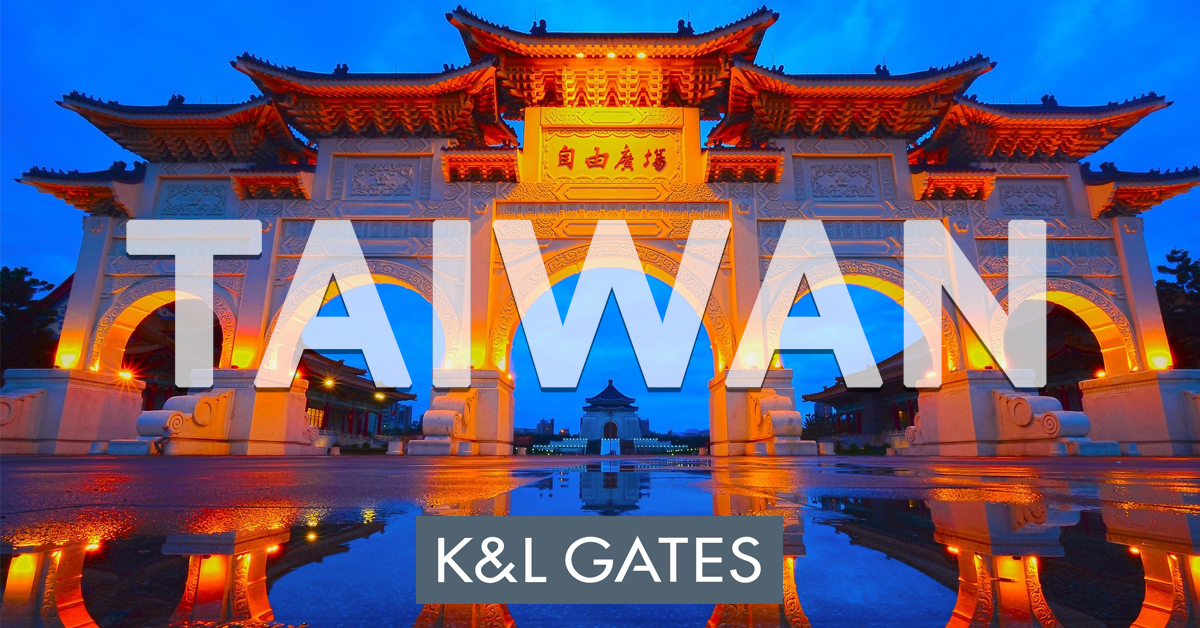MYANMAR
This article covers legal and regulatory aspects governing distressed mergers and acquisitions (“M&A”) and corporate restructuring in Myanmar.
Contributed by

https://www.dfdl.com
1. Current State of the Myanmar M&A Market
- What is the current economic condition of your country and which sectors are the most vulnerable, or are affected?
The country is enduring a severe economic slowdown due to the ongoing COVID-19 pandemic. Based on the World Bank’s Myanmar Economic Monitor released on 25 June 2020, the economic growth in a baseline scenario is projected to drop from 6.8 percent in FY18/19 to just 0.5 percent in FY2019/20. The most vulnerable sectors are hospitality, tourism, aviation, cut-make-pack and manufacturing.
- Are you seeing significant M&A or corporate restructuring transactions generally or are expected in the near future?
Distressed M&A in Myanmar remains at a nascent stage. The macroeconomic landscape of the country is such that most of the investments into Myanmar were predicated on a longer time horizon in regard to returns on investment. Furthermore, many of the larger projects in Myanmar were supported by institutions such as the International Finance Corporation and Asian Development Bank thus easing the distress on investments.
The prevailing trend among companies in Myanmar thus far has leaned more towards corporate restructuring than sales of shares/assets or related consolidation activity.
- What are the latest trends/statistics in your jurisdiction in the field of distressed M&A and corporate restructuring?
We have seen an increase in capital, organizational, labor and debt restructuring activities in Myanmar. In terms of labor restructuring, entities have been imposing working hour reductions on employees, redeployment of employees to other jurisdictions and workplace redundancies. Debt restructuring involving the conversion of debt to equity has also occurred. To streamline their operational viability, some foreign companies are conducting internal organizational restructuring at the holding company level.
We see the possibility of distressed M&A transactions ramping up in the areas of hospitality and aviation. The hospitality sector peak season in Myanmar ranges from October to March and this sector was thus less affected by the COVID-19 pandemic (which only began to tangibly affect Myanmar from the end of March 2020). However, given the present travel restrictions and delayed repercussions, the hospitality sector is likely to face severe impacts from October 2020. Some of the lower range hotels have already converted themselves into quarantine centers while some prominent international hotel brands that use refurbished government buildings have clauses rendering any potential share transfer subject to the government’s prior consent.
For the aviation sector, though foreign investment is permitted with ministerial approval, the government has been reluctant to approve foreign operators in this sector. Given the economic slowdown and distress, the Myanmar government may reconsider this which could result in an upturn in M&A activity.
- What are the opportunities available to foreign investors in such distressed M&A and corporate restructuring transactions?
Over the last five years, Myanmar has introduced numerous investor-friendly laws such as the Myanmar Investment Law 2016 (“MIL”) and the Myanmar Companies Law 2017 (“MCL”). In general, most sectors are open to foreign investment. The government has also liberalized certain protected sectors to foreign participants such as banking and insurance.
Unlike some mature jurisdictions where the law specifically requires governmental consent for distressed M&A, Myanmar has yet to promulgate similar requirements. However, this may also be due to Myanmar’s M&A sector in general being quite regulated. Most of the larger-scale M&A transactions in the country need government approval.
For instance, in the financial sector, any activity involving a transfer of 10% or more of a licensed financial institution’s total shareholding needs prior approval from the Central Bank of Myanmar (“CBM”). In the telecommunication sector, any transaction involving a 15% or higher share transfer needs approval from the Posts and Telecommunications Department (“PTD”).
- How far does the government assist in distressed M&A and corporate restructuring activities?
The Myanmar government issued the COVID-19 Economic Relief Plan (“CERP”) to mitigate the risks associated with the global COVID-19 pandemic and resulting economic slowdown. Several stimulus packages have been earmarked to shore up targeted sectors and promote their rehabilitation. However, distressed M&A has not been a focus of governmental assistance for the time being.
2. Distressed M&A
- What are the laws and regulations governing M&A in your country? Is there any special law specifically targeting distressed M&A?
The laws governing M&A activities in Myanmar are; the MCL, the MIL, the Competition Law (“CL”), the Competition Rules for the Telecommunications Sector and the Financial Institutions Law. Other sector-specific laws may also be applicable depending on the transaction.
There are no special laws which specifically target distressed M&A in Myanmar.
- Are there any thresholds for M&A transactions generally or sector-specific in your country? Are there relaxations of such thresholds in case of a distressed M&A?
The merger thresholds have not yet been set for general transactions under the CL and consequently no thresholds have been set for general or distressed M&A transactions.
Some of the exceptions to the above are the telecommunications and banking sectors where specific thresholds have been set by rules/notifications.
- Are there any sector-specific restrictions for such distressed M&A transactions?
There are no sector-specific restrictions for distressed M&A transactions in Myanmar.
- What are the restrictions on foreign ownership of assets in your country? Does the law provide for any permissible limits of foreign participation in M&A transactions? Are there any specific relaxations to this effect in the case of distressed M&A?
Under the Transfer of Immovable Property Restriction Act 1984, a foreigner (including foreign companies) is not permitted to own title over any immovable property such as land in Myanmar. No such restrictions apply to ownership rights over movable property (unfixed assets, machinery, vehicles etc.).
As mentioned above, foreign investment is generally permitted in several sectors. However, before any M&A deal, it is vital to determine whether the target’s activities may be carried out entirely by a foreign investor or whether sector-specific foreign investment thresholds apply.
There are no specific relaxations for foreign ownership in the case of distressed M&A.
- Are there any restrictions from the competition law aspect governing distressed M&A?
There are no restrictions from a competition law perspective governing distressed M&A.
2.1 Due Diligence
- Briefly describe the general process of legal and tax due diligence which is to be conducted on Target in case of a distressed M&A, specific risks, and mitigation?
The legal and tax due-diligence includes review of corporate compliance, validity of business licenses/permits and the transferability thereof, required approvals, filings, land issues, labour and tax compliance.
Potential risks may take the form of non-compliance with the relevant laws or potential restrictions on transfer clauses. Mitigation measures include having in place a robust set of conditions to be fulfilled prior to the transaction and necessary undertakings/warranties.
- Are records of company details (pending litigation, insolvency, land rights, etc.) available publicly? If such information is not available, what are the alternatives that the acquirer may consider?
No, details of pending litigation, insolvency and land rights are not publicly available. Given the lack of publicly available information, the acquirer must largely depend on disclosures made by the target.
In addition to disclosures, manual searches are also performed by the acquirer. A manual litigation search can be conducted at the Myanmar courts to gain information on pending litigation. For insolvency and/or winding-up proceedings initiated by or against the target, an unofficial gazette search is conducted. Similarly, a search at the local land office may be conducted to gather ownership information. Given that the process is manual, the veracity or comprehensiveness of such searches is debatable.
- How assets of a company are generally valued (government monitored or market-driven) from an M&A perspective? What factors should the acquiring company consider before initiating a transaction involving distressed M&A?
A company’s assets are market-determined and based on their valuation in the company’s accounting records. An acquirer should perform careful legal, tax and financial due diligence before acquiring a distressed company. Legal due-diligence on the distressed company will assist the acquirer in reaching an informed evaluation of the legal risks associated with the acquisition. The financial due-diligence will give the prospective purchaser an estimation of the associated financial risks and whether the acquisition is indeed viable.
- What are the level of assistance obtained from the governmental departments in cases of such transactions?
As mentioned before, distressed M&A is still at a nascent stage in Myanmar and we have not yet seen any such transactions close. However, in the approaching months and years when there may be an uptick in such transactions, there is a likelihood that the government will issue relevant notifications/rules to facilitate and expedite these.
2.2 Transaction Structuring
- What are the probable structures in case of distressed M&A permitted under the law (acquisition of asset or shares or other models)? Briefly describe the merits and demerits of each model.
Distressed M&A may be achieved through a share/stock acquisition model or a business and asset acquisition model. A share/stock acquisition model is the most common and some of the merits are that the acquirer need not be overly concerned about expensive re-valuations and retitling of individual assets. Most of the contracts are also transferred without the need to renegotiate unless there are specific restrictive clauses. However, the downside is that the liabilities automatically flow to the acquirer. Share transfer approvals from the governmental authorities may also be time-consuming.
Distressed M&A may also take place through the asset acquisition model. Some of the major advantages of this models are that potential acquirers can command what, if any, liabilities they are going to assume. This reduces the potential acquirer’s exposure to unidentified or undisclosed liabilities not provided by the seller. However, some disadvantages are that the contracts may need to be re-negotiated/novated by the acquirer, the assets may need to be retitled and employment agreements with key employees may need to be re-negotiated.
- What are the roles and responsibilities of the stakeholders – acquirer, target, governmental departments, legal and tax advisors, etc. in case of a transaction involving distressed M&A?
The principal responsibility of the target is to furnish complete information and documents to the acquirer. The target may also be required to obtain permission from the relevant government department for the transaction. The acquirer should conduct proper due diligence on the target, prepare the documents and ensure regulatory compliance before the closing phase. The responsibility of the governmental department is to streamline and efficiently handle requests for approval of M&A transactions. Legal and tax advisers will assist with due diligence, documentation, permit and licensing matters and legal advice on the laws and practices of the country. They will also assist on negotiations between the target and the acquirer to achieve closing.
2.3 Tax Considerations
- What are the general tax exemptions and relief for such distressed M&A transactions? Is the requirement to pay any tax or fees to the government?
The tax rules do not provide for exemptions and relief for distressed M&A transactions. However, tax exemptions and relief may apply to certain cases if they are specifically stated under a relevant (usually sector-specific law) law or through an agreement granted by the Myanmar Government.
Normally, proceeds of share and asset deal transactions would be subject to capital gains tax and stamp duty. An asset deal may also be subject to commercial tax (similar to value-added tax) and specific goods tax (similar to excise tax) depending on the type of assets sold. The assessment of taxes and government fees will vary depending on the details of the M&A transaction.
2.4 Documentation
- What are the key documents that need to be prepared to give effect to distressed M&A?
For the asset acquisition model, the key document is the asset transfer agreement. Assignment agreements to assign rights and transfer land title documents will also need to be executed as required.
Under the share acquisition model, the key document is the share subscription agreement or share transfer agreement. A joint venture agreement/shareholders’ agreement may also be required depending on the transaction.
- How are negotiations entered into between relevant parties?
Post- negotiation of key terms of the documentation, the parties negotiate and mutually agree on the final valuation. The parties discuss the financial terms and based on their cost-benefit analysis, finalize the transaction. Generally, legal and tax advisers representing both sides of the transaction are present during the negotiation to assist the parties.
2.5 Approvals
- Is there a requirement to obtain any consent or approval from the relevant government department for such distressed M&A transactions?
There are no specific distressed M&A-related consents/approvals, the general approvals for M&A transactions apply. For a Myanmar Investment Commission (“MIC”) approved company any M&A activity involving the transfer of more than 50% of an entity’s shares or assets to an unrelated party needs the MIC’s approval.
For distressed M&A transactions involving companies in special economic zones (“SEZs”), approval from the specific SEZ’s management committee is required. Depending on the transaction, approvals from sector regulators like the CBM for M&A activities in the banking sector, the PTD for telecommunications etc. may also be required. Relevant ministerial approval may be required if the transaction involves the transfer of certain licenses.
2.6 Closing
- What considerations should be factored before concluding the final close of the deal?
The acquirer must ensure that the conditions precedent mentioned in the relevant documentation are satisfied before closing. The list of conditions precedent may include representations/undertakings/warranties from the target on the basis of the due-diligence.
Post-closing integration is also important for M&A transactions. This includes compliance with statutory obligations such as employee registration with the labor authorities and registering the share transfer with the Directorate of Investment and Company Administration (“DICA”).
3. Corporate Restructuring
- What are the legal and regulatory requirements governing corporate restructuring in your jurisdiction?
Corporate restructuring may be in the form of capital, debt, organizational or labor restructuring. Capital restructuring may take the form of capitalization of profits, alteration of share capital, conversion of share classes, share capital reduction (through forfeitures and buybacks), etc. The necessary corporate authorizations/resolutions required to give effect to such forms of capital restructuring mentioned in the MCL must be complied with. For labour restructuring, in cases of employment terminations, the affected employees must be offered a month’s notice period and severance pay. If new employees are hired, then individual employment contracts must be executed and registered with the relevant Township Labor Office (for organizations with more than five employees).
Debt restructuring may involve the conversion of debt to equity. However, the CBM’s approval will be required if the loan structure is changed. In practice, when approval is sought from the CBM for an offshore loan, it is sought on the basis that it is convertible. In such a case, separate approval may not be required, though a notice to the CBM on the satisfaction of the loan may be necessary. However, if that is not the case, and the convertible aspect is an afterthought, the CBM’s approval will be required.
- What are the general trends seen in your country in the field of corporate restructuring?
Capital, debt, organizational or labor restructuring is prevalent in Myanmar.
Further, the Myanmar government enforced the Insolvency Law (“IL”) recently in March 2020. Under the IL companies that are enduring financial distress have the option of ‘corporate rescue and rehabilitation’. While the IL has only recently entered into force and practical elements of its functioning are still being worked out, the IL could potentially be used as a tool to rehabilitate distressed companies.
The process of corporate restructuring starts with the appointment of a rehabilitation manager (“Manager”). The Manager conducts meetings with the creditors and proposes a rehabilitation plan for the distribution of the assets. Once the rehabilitation plan is accepted, a plan supervisor (“Supervisor”) is appointed. The Supervisor is responsible to give effect to the plan by distributing the assets. Ideally, the company is rehabilitated and remains functioning as a going concern.
- What are the companies preferring in relation to corporate restructuring? Are companies considering internal restructuring – labor or financial restructuring or an overall restructuring of the entire business?
Most companies prefer labour and debt restructuring options. However, we have come across a few companies which are also considering internal/organizational restructuring options.
- How does the competition law regime play out in respect of corporate restructuring? Are there any sector specific restrictions for corporate restructuring?
The CL regime prohibits monopolization or manipulation of prices, abuse of dominant market position or pursuing restrictive agreements and arrangements among businesses. A company must refrain from such activities while restructuring the company. The terms of the CL are very broad and subject to a wide range of interpretation, thus companies must be mindful of the CL when considering corporate restructuring options.
There are no sector-specific restrictions applicable to corporate restructuring.
3.1 Corporate restructuring approvals
- What are the legal and regulatory compliances, filings required to give effect to a corporate restructuring?
For capital restructuring options, compliance in regard to corporate authorizations such as shareholder resolutions and/or board resolutions are required to give effect to capital restructuring. For instance, for a capital reduction, shareholder approval must be obtained. The resolution will also need to be filed with the DICA within 21 days of being passed. For labour restructuring options, retrenched employees must be offered a month’s notice period and severance pay under the Myanmar labour laws. For debt restructuring involving the conversion of debt into equity, the CBM’s approval (as applicable) will need to be obtained. In terms of rehabilitation proceedings under the IL, for corporate rescue, forms for the appointment of the Manager and Supervisor as the insolvency professional must be filed with the DICA.
3.2 Tax Considerations
- Are there any tax incentives that a company may claim owing to corporate restructuring? Is the requirement to pay any tax or fees to the government?
The tax rules do not provide for tax incentives in relation to corporate restructuring. The rules do not also provide clear guidelines whether tax assets (including loss carry-overs) can be used or be transferred in cases of corporate restructuring.
Please note that if the company has been granted tax incentives under an investment law, such incentives will continue to be availed of by the company (or to a new company) after the corporate restructuring subject to the approval from the relevant investment agencies (i.e. MIC or SEZ Management Committee).
- Other Factors
- How are the duties of directors affected due to the corporate restructuring?
For a company undergoing general corporate restructuring, the duties of a director are not affected.
However, if the restructuring is under the IL, with the initiation of the corporate rescue and rehabilitation process, the company directors cease to have any managerial powers over the company. The Manager who is appointed to oversee the restructuring proceedings may instead perform the activities of the directors.
- How is the general mode of treatment of employees of the restructured entity? Are there any mandatory provisions under the law for compensation or re-employment in case employees are retrenched or severed owing to restructuring
Depending on the restructuring transaction, the employees may be retained or retrenched by the restructured entity. There are no mandatory provisions for the re-employment of retrenched employees. However, as a general rule, the employer must provide one month’s notice to the employee and severance payment for employment termination due to the restructuring. Severance payments are calculated based on the employee’s length of service with the company.
4. Other Relevant Considerations
- Are there any restrictions under the anti-bribery, anti-corruption provisions of the law in your jurisdiction that may affect the transactions involving distressed M&A or corporate restructuring?
Anti-bribery and corruption matters in Myanmar are mainly governed under the Penal Code 1860 and the Anti-corruption Law 2013. There are no specific restrictions under these laws governing distressed M&A or corporate restructuring.
- How far is the legal and regulatory scenario conducive to permit distressed M&A transactions and corporate restructuring in your jurisdiction?
The legal and regulatory regime involving general M&A transactions has evolved over the last five years. Several sectors have liberalized and are now open to foreign investment. While we have not yet seen distressed M&A transactions, we expect that with the rise of distressed companies, there could be an increase in distressed M&A activity.
In terms of corporate restructuring, companies thus far have been conducting restructuring with minimal governmental intervention. Furthermore, the Myanmar government has brought the IL into force to give distressed companies a more detailed and robust regulatory framework governing corporate rehabilitation.
- Any unique features in the jurisdiction which are generally not seen in other jurisdictions or are not mentioned above?
Myanmar does not have a general merger threshold yet when compared to most mature jurisdictions. As a result, there is still no specific approval requirement from the Myanmar Competition Commission in regard to distressed M&A activity unlike some mature jurisdictions where prior governmental consent is the norm.
Distressed M&A in Myanmar has not seen very prevalent activity and it is only recently with the COVID-19 pandemic that the concept of distressed M&A is being spoken of in Myanmar. As a result, no special laws or legislative framework have thus far been formulated or tabled to deal with distressed M&A.
Authors:

Partner, Myanmar & Singapore Managing Director
william.greenlee@dfdl.com

nishant.choudhary@dfdl.com

Legal Adviser
rohan.bishayee@dfdl.com

Junior Legal Adviser
arijeet.nandi@dfdl.com

















